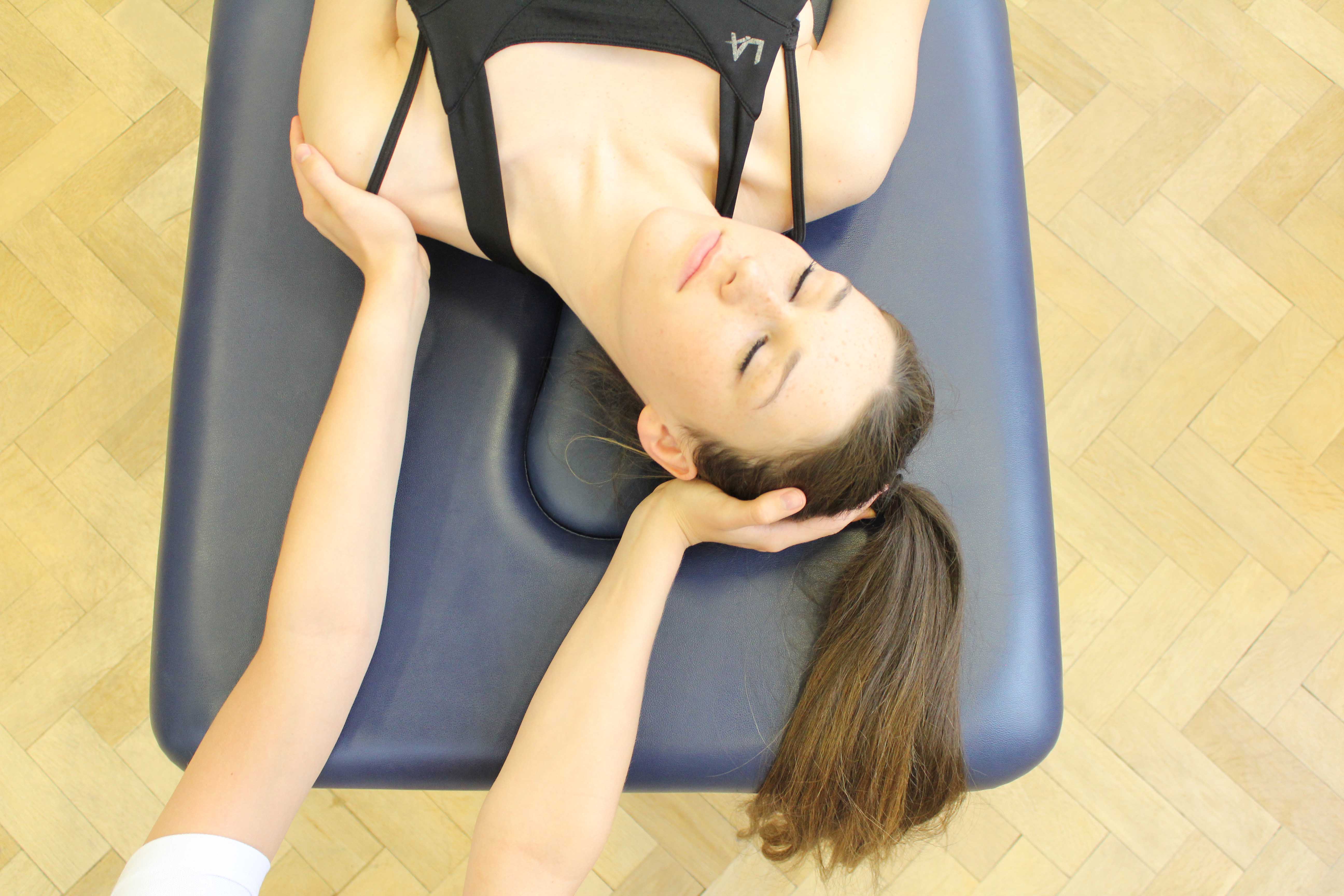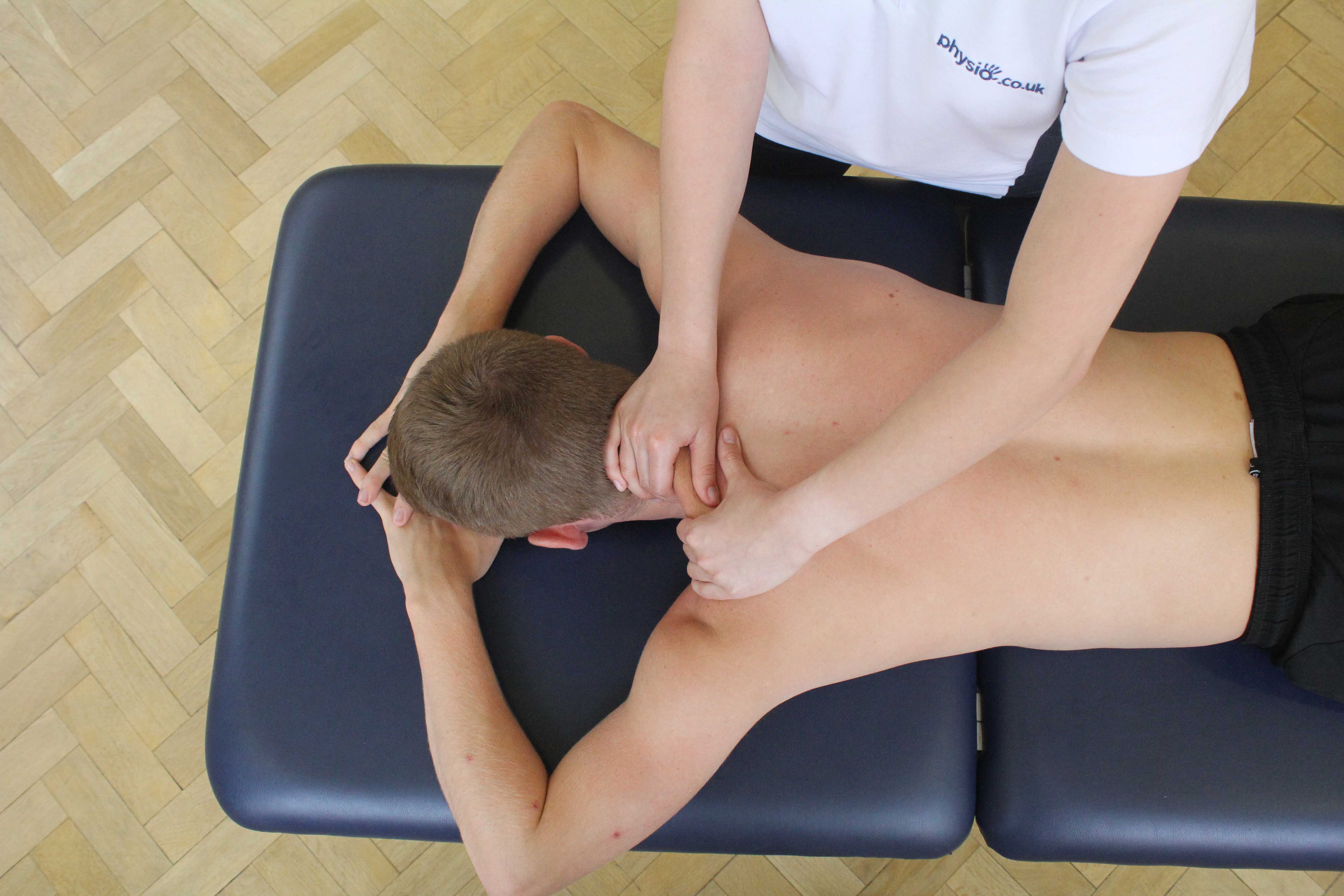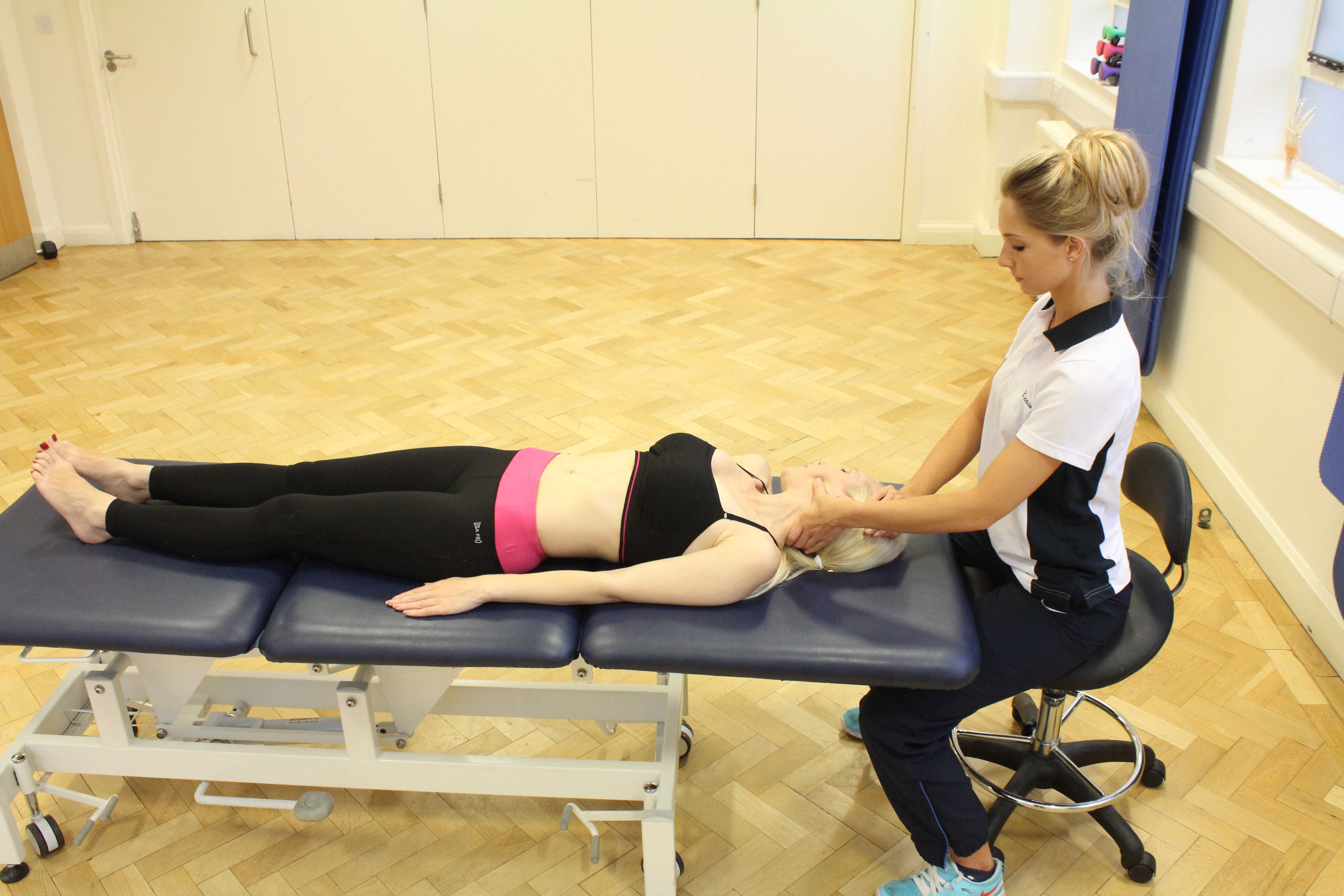What is cervical spondylolythesis?
Cervical spondylolythesis is when a vertebra in the neck slips forwards ahead of the vertebra beneath it. The effect of this can range from causing no problems at all to causing significant symptoms.
 Above: Passive stretch applied to trapezius muscle by therapist
Above: Passive stretch applied to trapezius muscle by therapistWhat causes cervical spondylolythesis?
Cervical spondylolythesis can be the result of several causes including:
- Genetic predisposition
- Degenerative changes
- Trauma from an injury
- Bone disease
 Above: Soft tissue massage of the muscles and connective tissues of the neck
Above: Soft tissue massage of the muscles and connective tissues of the neckWhat are the symptoms of cervical spondylolythesis?
Cervical spondylolythesis can cause symptoms such as:
- Reduced range of movement
- Pain
- Numbness / Pins and needles
- Weakness of neck muscles
Physiotherapy for cervical spondylolythesis
Physiotherapy can be very important in treating cervical spondylolythesis. At Physio.co.uk our specialised physiotherapists treat each patient as an individual, aim to prevent symptoms and teach self management. Treatment may include:
- Advice on pain relief
- Bracing
- Stretching exercises
- Strengthening exercises
- Manipulation
 Above: Experienced Physiotherapist conducting an assessment of the cervical spine, muscles and connective tissues in the neck
Above: Experienced Physiotherapist conducting an assessment of the cervical spine, muscles and connective tissues in the neckCan cervical spondylolythesis cause any long-term effects?
Physiotherapy can effectively treat cervical spondylolythesis in the majority of cases, especially for younger people. If physiotherapy is not effective then surgery is an option that can be used to treat the problem. Physiotherapy would then be used in rehabilitation.
 Above: Stretches and mobilisations of the cerival spine, muscle and connective tissues in the neck
Above: Stretches and mobilisations of the cerival spine, muscle and connective tissues in the neckTo arrange an assessment with Physio.co.uk please contact us or call 0330 088 7800.

 0330 088 7800
0330 088 7800

































